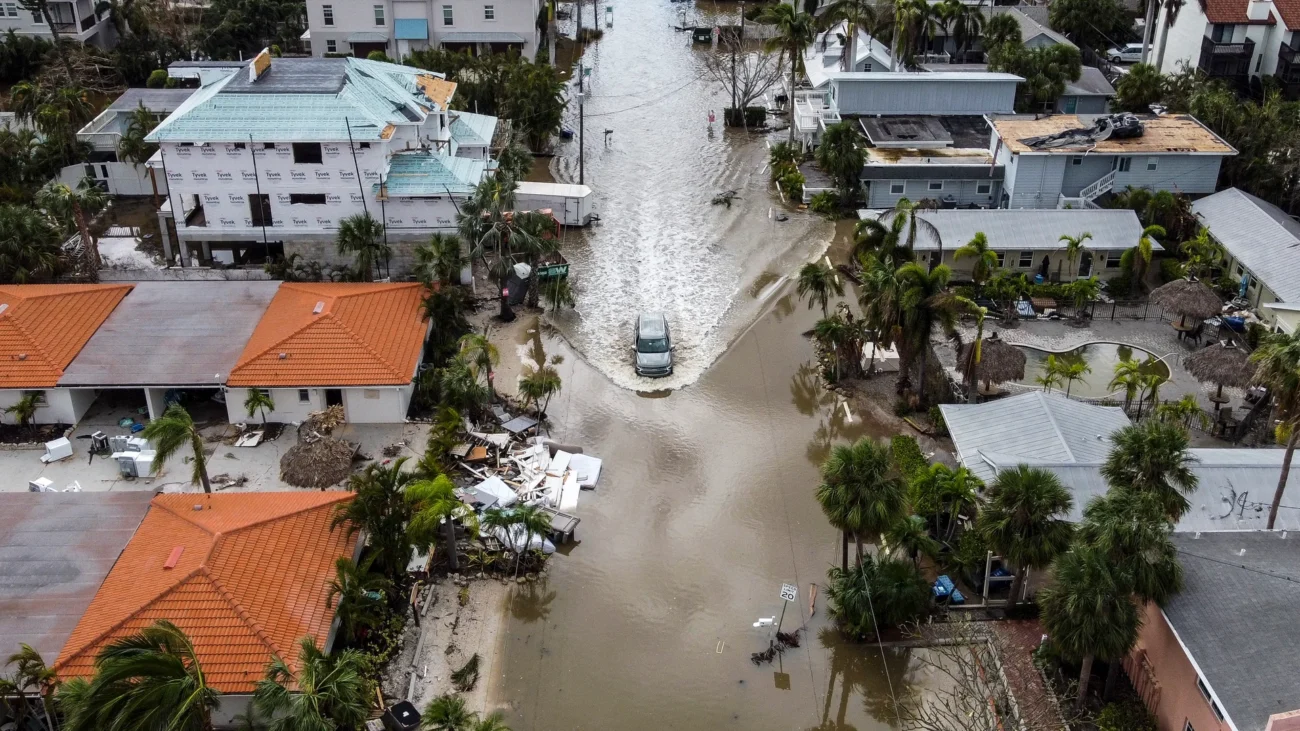Florida, often known as “The Sunshine State,” is famous for its beaches, warm climate, and vibrant cities. Yet behind the tropical beauty lies one of nature’s most powerful and destructive forces — the hurricane. Year after year, Florida finds itself in the crosshairs of tropical storms and Florida Hurricane that form over the Atlantic Ocean and the Gulf of Mexico. These storms have shaped the state’s geography, economy, infrastructure, and way of life for centuries.
What Is a Hurricane?
A hurricane is a large, organized storm system that forms over warm ocean waters, characterized by strong winds, heavy rainfall, and a low-pressure center known as the eye. Technically, hurricanes are classified as tropical cyclones with sustained winds of 74 miles per hour (119 km/h) or higher.
Why Florida Is So Vulnerable to Hurricanes
Florida’s unique geography makes it highly susceptible to tropical storms. The state’s peninsula shape means it’s surrounded by warm waters on nearly all sides — the Gulf of Mexico to the west, the Atlantic Ocean to the east, and the Caribbean Sea to the south.
Warm water acts as the fuel for hurricanes. When ocean surface temperatures rise above 80°F (27°C), they provide the perfect environment for storms to intensify. As these systems move northward, Florida often becomes their first point of landfall.
Additionally, Florida’s flat terrain and low elevation make it especially vulnerable to storm surges, flooding, and wind damage once hurricanes make landfall
A Brief History of Hurricanes in Florida
Florida has a long and stormy history with hurricanes. Since official records began in the mid-19th century, the state has been hit by over 120 hurricanes, more than any other U.S. state. Some of these storms have been among the most powerful and destructive in American history.
1. The Great Miami Hurricane (1926)
This Category 4 storm devastated South Florida, particularly the Miami area. It caused massive destruction and economic collapse, reshaping Miami’s growth for decades.
2. Hurricane Andrew (1992)
Hurricane Andrew remains one of the most infamous storms in U.S. history. Making landfall near Homestead as a Category 5 hurricane, it destroyed over 63,000 homes and caused damages exceeding $27 billion. Andrew’s impact led to a complete overhaul of Florida’s building codes and disaster preparedness policies.
3. The 2004 Hurricane Season
In 2004, Florida experienced an unprecedented year with four major hurricanes — Charley, Frances, Ivan, and Jeanne — all striking within six weeks. The cumulative damage tested the state’s emergency systems and emphasized the importance of disaster resilience.
4. Hurricane Irma (2017)
Hurricane Irma was a massive Category 4 storm that affected nearly the entire state. It caused widespread power outages, flooding, and significant agricultural losses. Irma’s size and strength made it one of the most memorable storms of the 21st century.
5. Hurricane Ian (2022)
One of the most recent catastrophic hurricanes, Ian, made landfall on Florida’s southwest coast as a Category 4 storm. It caused devastating storm surges in Fort Myers and Naples, killing over 100 people and resulting in tens of billions of dollars in damage.
These historical hurricanes serve as reminders of both nature’s fury and Florida’s resilience.
The Impact of Hurricanes on Florida
Hurricanes affect nearly every aspect of life in Florida — from infrastructure and economy to mental health and environmental balance.
1. Economic Impact
Each major hurricane leaves behind billions of dollars in damages. Beyond the cost of rebuilding homes and businesses, the tourism industry — a key part of Florida’s economy — often suffers significant losses during and after storms. Crop destruction, especially citrus and sugarcane, also contributes to long-term financial strain.
2. Environmental Impact
Storm surges and heavy rainfall can reshape coastlines, destroy habitats, and contaminate freshwater systems. Hurricanes can cause beach erosion, wetland destruction, and water pollution as debris and chemicals are carried into rivers and bays.
3. Human and Social Impact
The human toll of hurricanes includes loss of life, displacement, and trauma. After severe storms, thousands of residents may be left homeless, facing emotional stress and financial hardship. Long-term power outages and lack of clean water can also lead to public health emergencies.
Hurricane Preparedness in Florida
Despite its vulnerability, Florida has become one of the most hurricane-prepared regions in the world. Decades of experience have led to a comprehensive approach to emergency management.
1. Advanced Warning Systems
The National Hurricane Center (NHC) and NOAA use satellites, radar, and computer models to predict storm paths and issue timely warnings. Residents are usually given several days to prepare before a hurricane’s arrival.
2. Building Codes and Infrastructure
After Hurricane Andrew in 1992, Florida implemented strict building codes designed to withstand high winds and flooding. New homes and buildings must meet rigorous standards, especially in coastal areas.
3. Evacuation Plans
Every Florida county has a detailed evacuation plan, with routes clearly marked and shelters prepared to accommodate displaced residents. Coastal communities practice these procedures regularly.
4. Emergency Supplies
Floridians are encouraged to maintain a hurricane preparedness kit containing essentials such as:
- Bottled water and non-perishable food
- Flashlights and batteries
- First aid supplies
- Important documents
- Portable phone chargers
- Emergency contact lists
5. Community Awareness
Public awareness campaigns, local drills, and educational programs ensure that residents — especially newcomers — understand the risks and know how to respond when warnings are issued.
Climate Change and the Future of Hurricanes
Scientists warn that climate change may be increasing the intensity and frequency of major hurricanes. Rising sea surface temperatures provide more energy for storms, while rising sea levels amplify storm surges and flooding risks.
Although the total number of hurricanes each year may not increase dramatically, the strongest storms are becoming even stronger. In Florida, this means future hurricanes could bring more rainfall, higher winds, and longer-lasting impacts.
To combat this, Florida and other coastal states are investing in resilient infrastructure, coastal restoration, and renewable energy initiatives to reduce carbon emissions and strengthen natural barriers.
The Role of Technology in Hurricane Tracking and Response
Modern technology has revolutionized how Florida prepares for and responds to hurricanes.
- Drones are used to assess damage in hard-to-reach areas.
- AI-powered models improve storm forecasting accuracy.
- Mobile apps provide real-time updates on evacuation zones, shelter availability, and storm paths.
- Social media platforms have become crucial tools for communication during emergencies.
Thanks to these advancements, response times have improved significantly, saving lives and reducing chaos during disaster situations
Living with Hurricanes: A Part of Florida’s Identity
For Floridians, hurricanes are not just weather events—they are a part of life. Residents learn from an early age how to prepare, protect, and rebuild. The sense of community resilience is one of the state’s most admirable traits.
After every major storm, volunteers, neighbors, and emergency workers come together to help one another rebuild. This spirit of unity is what makes Florida strong, even in the face of repeated natural disasters
Conclusion
Hurricanes are an inevitable part of florida hurricane natural environment, bringing both devastation and renewal. While these storms test the strength of communities, they also inspire innovation, preparedness, and solidarity among residents.
As climate change continues to alter weather patterns, Florida’s commitment to resilience, science, and sustainability will be more important than ever. By understanding the past, preparing for the future, and working together, the Sunshine State can continue to thrive — even in the shadow of the storm.

